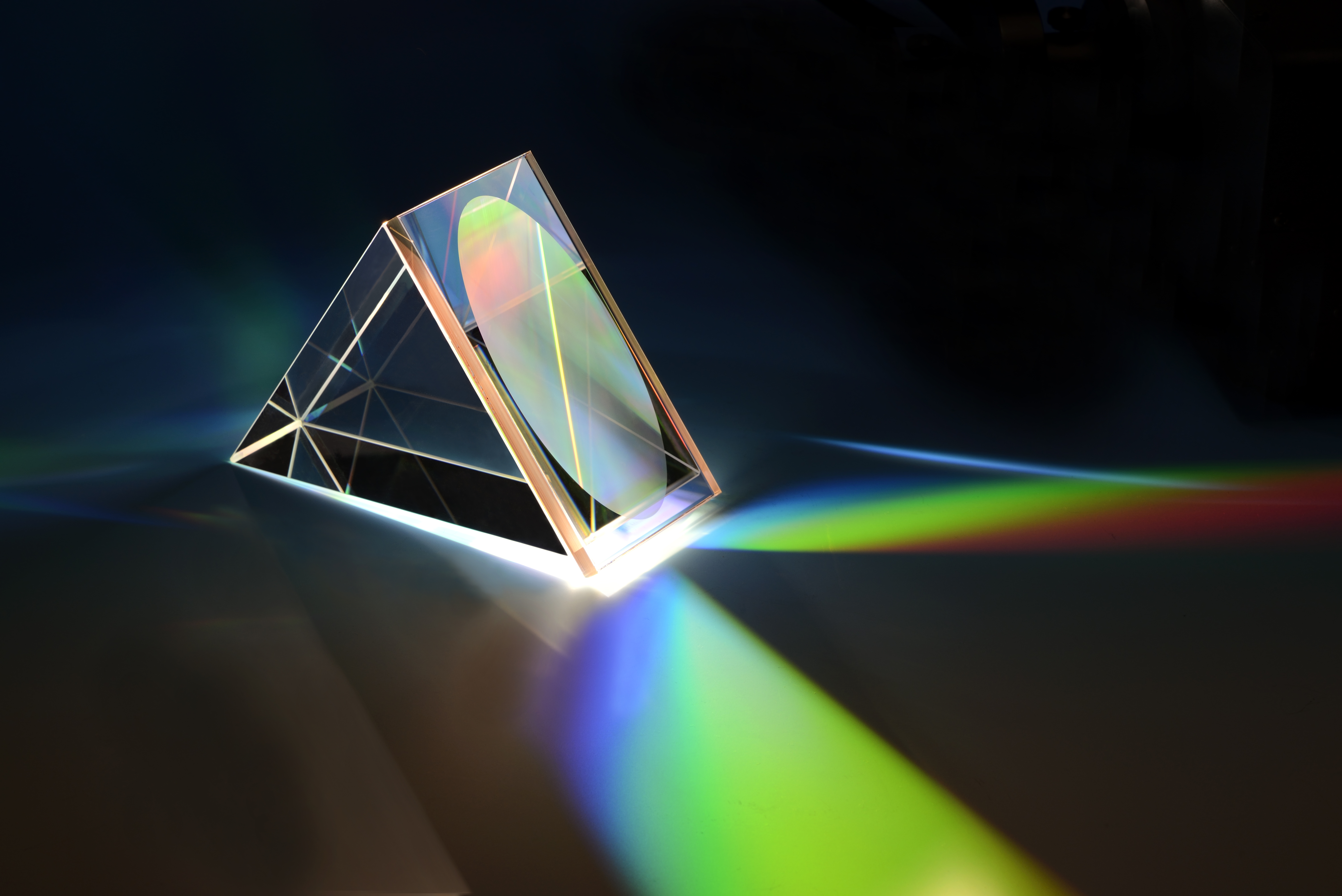With spectrometers brought into space via satellite, the reliable measurement of greenhouse gases (e.g. CO2, CH4, N2O) within earth’s atmosphere is feasible. Such spectrometers analyze the light reflected from earth by decomposing it into its colors using a so-called GRISM, an acronym which refers to its two fundamental components: a grating (GRating) and a prism (prISM). By uniting both elements to a GRISM, diffractive and refractive features can be favorably combined to achieve outstanding spectral resolution.
At Fraunhofer IOF, a manufacturing approach has been developed for joining the corresponding individual glass elements by hydrophilic direct bonding. This allows the separate production of the individual parts with high precision on well-established production tools. Typically, the grating structure is generated on top of a fused silica (SiO2) substrate by e-beam lithography and reactive ion etching which allows aspect ratios of up to 1:10. Thus, properties that are most critical to the instrument’s performance, e.g. diffraction efficiency, polarization sensitivity, lateral uniformity, and wave-front error, can be optimized and controlled to a large extent. Common optical processes of grinding, lapping, and polishing can be used for the prisms.
Grating and prism are brought into mutual alignment and then combined by the new joining technology to establish a single, quasi-monolithic element. Stiff and durable mineral bonds, high strength, and excellent transmission are achieved. The process requires extremely smooth surfaces and provides permanent joins through covalent bonds of the Si-O-Si type at the nanometer scale. The mineral nature of these bonds is perfectly adapted to most optical materials (glasses as well as crystals) and the extremely thin bonding layers generated with this technology are durable and well suited to transmission optics.
The new technology has been used successfully for bonding both unstructured as well as structured grating sides (hermetic sealing) with and without coatings to fused silica prisms of various sizes.
Authors: Gerhard Kalkowski, Thomas Flügel-Paul
